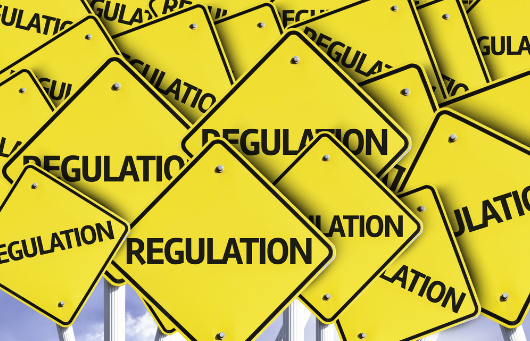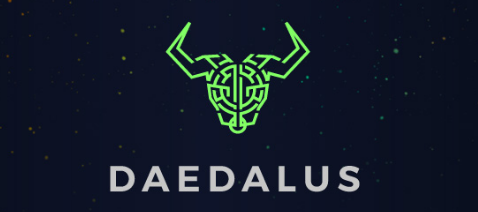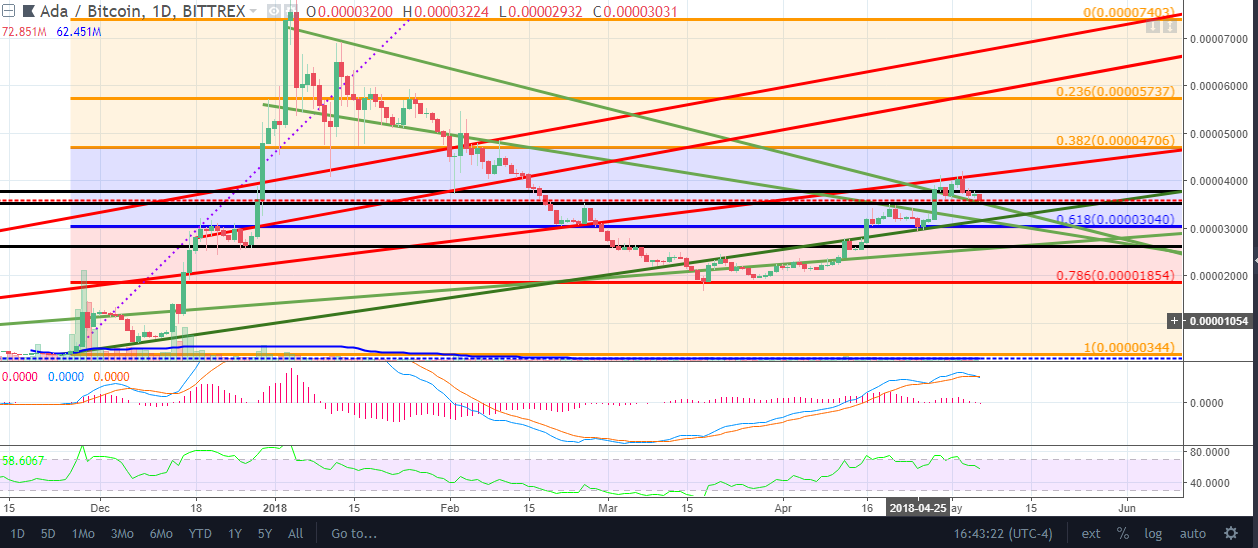Over the years there have been many things we’ve come to associate with blockchain technology. We expect blockchains to be open-source and ledgers transparent. We expect decentralization. We’ve come to associate blockchain transactions as private, fast, secure and cheap. Most of all, we’ve come to love cryptocurrencies because of the opportunity it gives us to break-free from the institutionalized banking system. Crypto opens the door to a world where trading currency globally should one prefer, isn’t the hassle it has become with the aforementioned system. Alas, as death and taxes are, regulation is also certain.

(Image Credit)
Today, nearly a decade after Bitcoin’s controversial emergence, the world is taking a closer look at exactly how to regulate digital currencies. Governments want to protect their citizens and of course, maintain the integrity of their own economic systems. They implore the world to wait to buy into digital currency until the market has stabilized and more research has been done.
Governments promise fair and necessary regulations that will allow blockchain technology to still function in a decentralized way but maintain citizens and the worlds safety. Perhaps they will, but at the moment regulations are either non-existent or so stringent that to use digital currencies seems daunting and dangerous. AND where regulations are in place, how anonymous is it really if blockchains comply? Thousands of “alt” coins are scrambling to answer this question, dedicated to their consumers but being crushed by the weight of meeting varying worldwide legal guidelines less they forfeit their right to be called a “currency”.
One platform has stepped up to the plate doing their homework, researching the past, coming to a consensus and claiming to have found the key to serving regulators, marketers, and consumers while furthering the development of blockchain technology. According to their white paper, their method includes “learning from the nearly 1,000 altcoins by embracing features that make sense.”

Cardano, listed on exchanges as ADA claims their one of a kind technology is based on “legacy protocols” of the past and ensures only the transference of necessary metadata to approved parties. This, in theory, means collecting only the information needed to meet regulations and delivering it in a way that still maintains the privacy of the consumer. If this is the case, individuals using the digital currency would always be following regulation no matter where they are, while being assured the blockchain technology they’re supporting is still furthering the original vision of Satoshi Nakamoto.
Developed by a team whose philosophy describes a unique vision-that “legacy financial systems” like banks, can always “absorb change”. Unlike a number of other cryptocurrencies, Cardano doesn’t want to outdo the banks. What this team desires is to be where the banks can’t be. Where “it is simply too expensive to deploy the existing banking system, where many live on less than a few dollars a day, have no stable identity and credit is impossible to find.”
Cardano also believes in “individual rights” as well as markets “right to openly state their terms and conditions”. In their research proposal they state “if an individual agrees to do business within this market, then they must be held to those standards for the sake of integrity of the entire system.”
Research into what has become Cardano began in 2015. Using the scientific method, Cardano has developed a white paper which reads more like a philosophical decree. Supported by several peer reviewed research papers covering the various layers of their proposed plan-Cardano’s developers envision refining the edges of what you could consider rough diamonds, promising protocols that never took shape. In their white paper the Cardano team refers to these diamonds in the rough as legacy systems.
Using data compiled from surveys and research garnered from legacy protocols a number of academic teams supported by IOHK (Input Output Hong Kong) melded their conclusions and hypothesis together to create a theory unlike any other. By changing the form of a number of previous protocols including some similar to and found in Dash, Tezos and Bitcoin itself, ADA developers believe they can further blockchain technology, retain the power and influence of the community and protect them from harsh penalties put in place to maintain regulation. The teams propose this can be accomplished by using separation of value and computation: separating metadata related to “the story” of transfers from the data related to the “transfer of value”.
To prevent abuse within the system “A protocol to ensure payment distribution and penalize “misbehaving/aborting” parties” was implemented and named Kaleidoscope. This protocol is based on work by “Andrychowicz, Kumaresan, and Bentov et al” and has been reconfigured by IOHK to run within Cardano’s layers.
The first of the two layers is known as the Cardano Settlement Layer (CSL). Here monetary ledger information is collected, and written in Plutus, a language based on concepts from Haskell and adapted with the ability to support side-chain technology. This language was specially chosen to support integration with other layers necessary to support Cardano’s mission.
The second is called the Cardano Computational Layer (CCL). Within this layer information about consumers is collected. This protocol allows transactions to meet know your customer requirements while keeping details of monetary transactions private from the requesting party if not elicited. Collection of this information also fulfills requirements necessary for smart contracts to run.
The CSL layer functions using Cardano’s ADA token. ADA functions as a proof of stake coin supported by the teams original and environmentally friendly Ouroboros algorithm.

This algorithm they’ve dubbed “the most important part of the protocol” necessary to maintain checks and balances on the ledger. Cardano describes the protocol as follows:
“Ouroboros is the first proof of stake protocol that has mathematically been shown to be provably secure, and the first to have gone through peer review through its acceptance to Crypto 2017, the leading cryptography conference. The level of security demonstrated by Ouroboros compares to that of Bitcoin’s blockchain.
To achieve 100% decentralization and release future updates while maintaining the integrity of the projects current status, Cardano has proposed several stages which will be necessary for their theory to come to fruition.
Currently the project is in the “Byron Stage” which the Cardano team refers to as their “bootstrap phase” following 2 years of development. During this time ADA has begun being bought and sold while the Ouroboros protocol is strengthened. Completing this phase will ensure processes are running smoothly for the next phase, Shelley.
Named after Percy Bysshe Shelley, this stage is slated for Q2 and Q3 2018. This element was designed to ensure that the Cardano protocol is ready to realize its vision of being 100% decentralized. During this time test nets and registration for staking pools will become live as well as a number of other features including light client support, quantum resistant signatures, networking, paper wallets, debit cards and the introduction of the ADA wallet Daedalus.
Built on top of the cross platform web development service Electron, Daedalus is open source, and revered as “highly” secure. On it’s way to becoming a universal solution for tracking and holding an array of digital currencies, developers have included a plan to allow easy transfers of currencies across blockchains. Daedalus will make such transactions more simple, secure and compliant. With the wallet being open sourced Cardano is opening to the public the ability to development of apps which will work directly with the Daedalus wallet available via its own app store.

Following the completion of stage Shelley is the Goguen Stage, named for Joseph Amadee Goguen.
At this time the restructuring of the LLVM compiler infrastructure will be unveiled. Basing their code on this legacy technology, the Cardano team was able to conjure up IELE, their version of smart contract execution via the blockchain. What makes this different from the legacy protocol is its ability to compile “unbounded integers and unbounded number of registers” which makes it easier for this new protocol to “serve as a uniform, lower-level platform for translating and executing smart contracts from higher-level languages.”
The Goguen stage will also be when side-chains compatible with the Cardano Settlement Layer will be released. The Cardano developers state that these side chains will enable “scalability” and help implement the “multi currency ledger”. Also taking place during this phase the deployment of smart contracts and the rollout of IELE V1.
To conclude this stage Goguen’s test net will launch followed by the next to last stage Basho.
With the purpose of implementing performance improvements, this period will include the addition of a “revised network layer” and the introduction of “Ouroboros Praos”. According to the roadmap Cardano’s “voting center” will also open acting as a “hub” for community involvement pertaining to protocol changes.
The final “official” stage, the Voltaire Stage, “is focused on assurance and scalability and will see the introduction of a treasury model. This will ensure the sustainability and self sufficiency of the blockchain and community.”

(Image Credit)
Currently in circulation are 25,927,070,538 ADA coins with a total supply available of 31,112,483,745 ADA. Prior to ADAs official launch 20% of the original max supply of 45,000,000,000 coins were distributed amongst the entities which make up Cardano. These 3 entities include “The cardano foundation, the technical and business development pool and IOHK”. According to developers, this transaction was the first in the cryptocurrency industry to meet “know your customer guidelines” while also having an audit performed of the completed process. These audits, performed by “Grimm, RPI Cryptography Group and FP....ensure the quality of the product by holding IOHK accountable.”
At the moment market cap for this coin is $8,957,673,236 USD and on Coin Market Cap it holds the 7th rank. Just today IOHK tweeted about Cardano’s influence on the potential for blockchain technology to emerge in Africa.

This news comes just 3 days after the announcement of a Memorandum of Understanding between Cardano and the Ethiopian government covering how “Ethiopian developers (will) apply blockchain technology to the country’s agritech industry.”

Follow this chart here.
Trading on the 1-Day chart ADA is sitting between horizontal support and resistance well above the .618 after wicking through a couple significant resistance lines a few days ago. Volume has begun to taper off across this chart however on the 4-hour chart price action looks likely to remain above the cluster of support seen just below its last low. This could indicate a bull movement is about to happen, potentially reaching that yellow resistance again within a week or two with the potential to break through if positive news keeps rolling out from Cardano.
What do you think about the way the Cardano team has developed their technology? Is beginning with the basic “legacy technology” the key to success that other altcoins have been missing?
Let us know!
°Br¡tT^N¥° (@TheJadeCrow on Twitter)